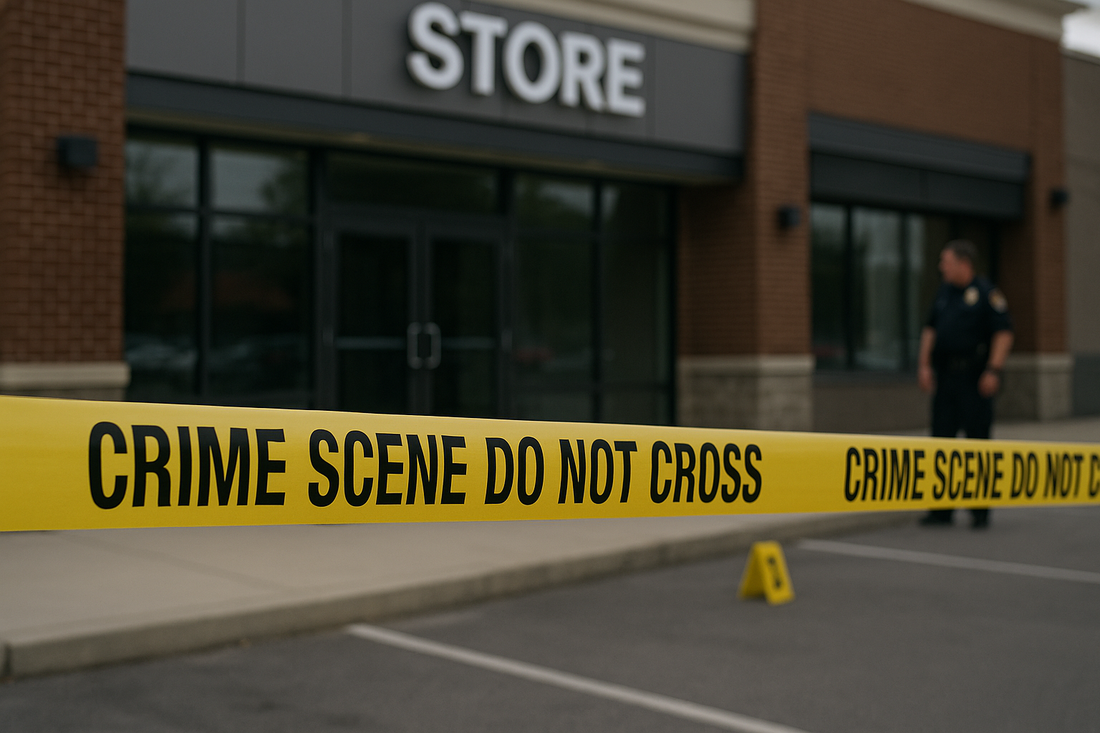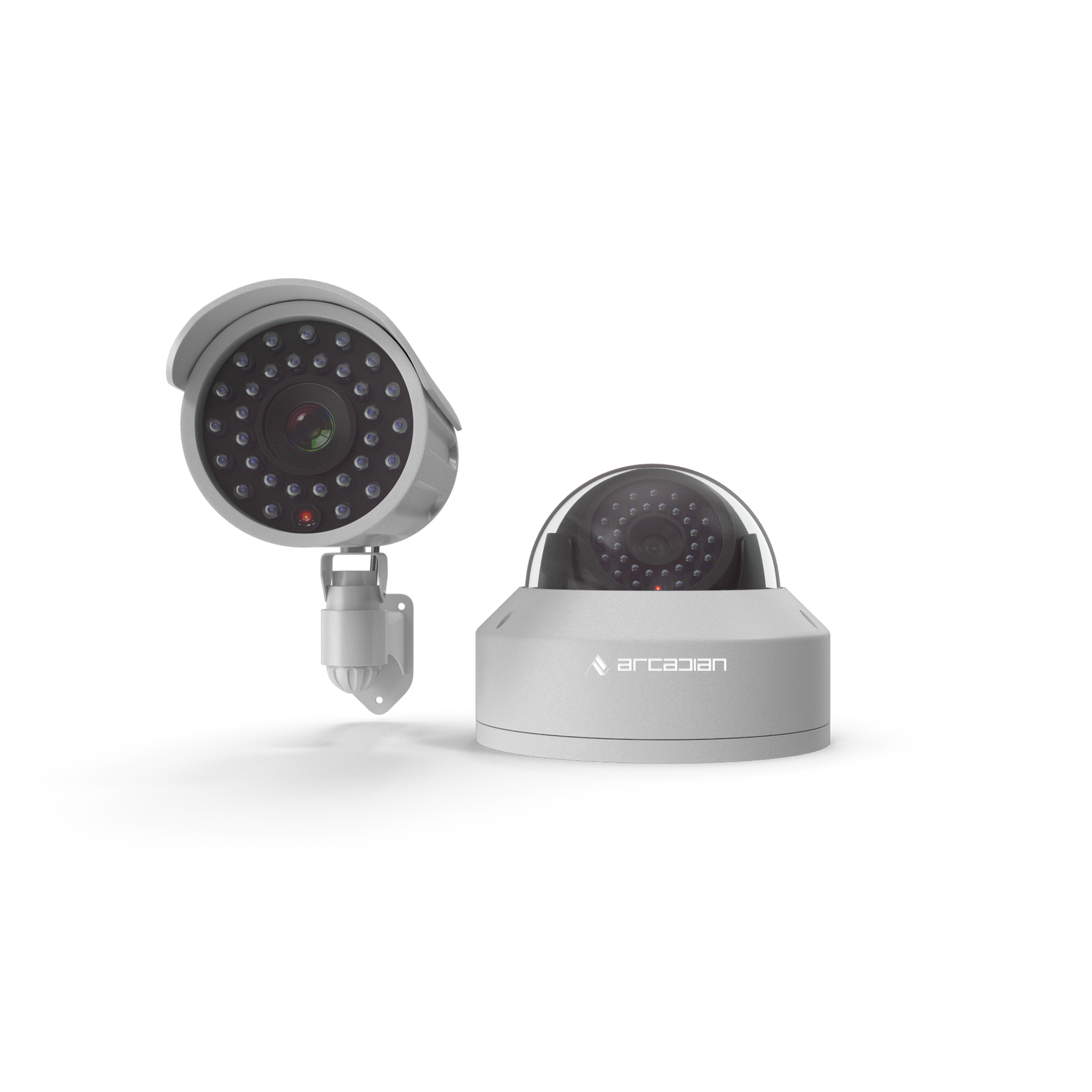Ranking Crime in Canada and the United States: What It Means for Businesses and Security in 2025
A new Fraser Institute study shows crime patterns in Canada and the U.S. are shifting. For retailers, logistics, and enterprises, these numbers aren’t just statistics—they’re profit and safety risks.

Introduction
In August 2024, the Fraser Institute released a study ranking crime across Canada and the United States . The findings are striking: while Canada still records lower homicide rates, it ranks worse in violent crime severity and property crime. For businesses managing thousands of locations—from Walmart and Sobeys to UPS and FedEx depots—these rankings are more than academic. Crime means shrinkage, lost revenue, higher insurance, and endangered staff.
ArcadianAI, with our AI-powered assistant Ranger, exists to flip this narrative. Unlike competitors like Verkada or Eagle Eye Networks that promise “visibility,” ArcadianAI delivers actionable intelligence—catching what humans and static NVRs miss. If crime is data, we turn that data into prevention.
Quick Summary / Key Takeaways
-
Canada ranks higher in violent crime severity than the U.S.
-
U.S. homicides remain disproportionately higher.
-
Retail, logistics, and urban hubs are prime targets.
-
Static NVRs/VMS platforms can’t adapt to crime trends.
-
ArcadianAI + Ranger cut false alarms and shrinkage.
Background & Relevance
Crime is not static; it evolves with society. According to the Fraser Institute, Canada’s Violent Crime Severity Index is now 20% higher than the U.S. . Meanwhile, FBI reports show U.S. organized retail crime (ORC) surged past $94.5B in 2023. Retail shrink in North America topped $112B in 2022, according to the National Retail Federation.
For decision makers, these aren’t distant numbers. They are operational risks. Every burglary at a CVS, every ORC sweep at Target, every stolen truckload at a logistics hub translates into margin erosion. Without smarter surveillance, companies are bleeding profit while competitors like Verkada sell closed, costly systems that lock you in without solving the core problem.
Core Topic Exploration
Is Canada Really Safer than the U.S.?
Traditionally, Canadians viewed their country as safer. The Fraser Institute study complicates that belief:
-
Canada has a higher rate of robbery and sexual assault.
-
Property crime rates in Canada exceed U.S. averages.
-
The U.S. still dominates in homicides, accounting for four times Canada’s rate.
This duality matters. Canadian retailers like LCBO, Canadian Tire, and Loblaws face shoplifting waves. U.S. counterparts like Walmart, Walgreens, and Home Depot face violent theft. Both scenarios demand adaptive security—something static CCTV cannot provide.
Why Crime Rankings Matter to Businesses
Crime rankings aren’t about political bragging rights; they define insurance premiums, security budgets, and operational planning. If Alberta ranks higher in vehicle theft than Michigan, logistics companies reroute risk. If California faces ORC crews while Ontario faces burglary spikes, retail loss prevention must adjust.
Ranger, our AI engine, thrives here. It analyzes regional motion, anomaly patterns, and known-risk triggers across all your cameras—NDAA-compliant or legacy analog. Instead of waiting for loss, it prevents it.
The Surveillance Gap: Why Competitors Fail
-
Verkada: Closed ecosystem. If your camera isn’t theirs, you’re locked out.
-
Genetec: Powerful VMS, but high cost and heavy IT lift.
-
Milestone: Great flexibility, but outdated against AI-native crime.
-
Eagle Eye Networks: Cloud VMS, but prone to false alarms and slow response.
ArcadianAI takes the opposite path. Camera-agnostic, cloud-native, and built on AI motion pre-filters, Ranger reduces 85–90% of frames before inference—delivering fast, accurate alerts with no vendor lock-in.
Comparisons & Use Cases
Table: ArcadianAI vs. Traditional Platforms
| Feature | ArcadianAI | Verkada | Genetec | Eagle Eye | Milestone |
|---|---|---|---|---|---|
| Camera Compatibility | Any brand (ONVIF, RTSP) | Only Verkada | Most IP | Many IP | Most IP |
| False Alarm Reduction | 85–90% | Limited | Basic rules | Limited | Rules-based |
| AI Search & Forensics | Semantic, timeline, Re-ID | Limited | Add-ons | Limited | Add-ons |
| Deployment | Cloud + edge bridge | Proprietary hardware | IT-heavy | Cloud | On-prem/cloud |
| ROI Focus | Shrink & insurance savings | Lock-in sales | IT budgets | Recurring cloud | IT spend |
Example Use Cases
-
Retail (Walmart, Loblaws): Cut shrink by 20–30%, reduce dispatch costs.
-
Logistics (UPS, FedEx, DHL): Spot cargo theft patterns in real time.
-
Urban Stores (IKEA, Best Buy): Detect ORC crew entry before loss.
-
Critical Sites (Hospitals, Schools): Smart alerts without false positives.
Common Questions (FAQ)
Q1: Why does Canada rank higher in violent crime severity than the U.S.?
Because Canada’s Violent Crime Severity Index weighs robbery and assault heavily, which remain more frequent than in the U.S.
Q2: Are homicides really lower in Canada?
Yes. U.S. homicide rates are about four times higher than Canada’s.
Q3: What does this mean for retailers?
Retailers in both countries must deal with theft and ORC, but Canadian stores face more property crime while U.S. retailers face more violence.
Q4: Can ArcadianAI integrate with existing cameras?
Yes. Ranger connects via bridge devices to any ONVIF/RTSP camera without lock-in.
Q5: How does this help with insurance premiums?
Reduced shrinkage, verified alarms, and improved reporting lower risk scores, often cutting premiums 10–20%.
Conclusion & CTA
The Fraser Institute’s rankings are a wake-up call. Canada’s violent and property crime rates now rival or exceed U.S. levels in critical categories. Businesses cannot afford passive surveillance that records loss instead of preventing it.
ArcadianAI, powered by Ranger, transforms cameras into crime-prevention tools. We cut false alarms, reduce shrinkage, and unlock ROI while competitors lock you in.
See how ArcadianAI protects your business:
Get Demo – ArcadianAI
Security Glossary (2025 Edition)
AI Alerts — Automated notifications triggered by AI models when suspicious motion or anomalies occur.
Bridge Device — Edge hardware that securely connects legacy cameras to ArcadianAI’s cloud platform without port forwarding.
Crime Severity Index (CSI) — A statistical measure weighing the seriousness of crime incidents, used in Canada.
False Alarm Fine — Municipal fee ($100–$160 per call) for police responses triggered by false security alarms.
Genetec — Enterprise-grade video management software (VMS) used in North America.
Milestone — Danish VMS provider offering open-platform surveillance solutions.
NVR (Network Video Recorder) — On-premises system for recording video streams from IP cameras.
ONVIF — Global standard for IP-based physical security products enabling interoperability.
ORC (Organized Retail Crime) — Coordinated theft by groups targeting high-value retail goods.
Ranger — ArcadianAI’s AI assistant that analyzes video feeds to reduce false alarms and detect threats.
RTSP (Real-Time Streaming Protocol) — Standard protocol for streaming video from IP cameras.
Shrinkage — Retail losses due to theft, fraud, or errors.
Surveillance-as-a-Service (VSaaS) — Cloud-based video surveillance model offered by ArcadianAI, Eagle Eye, and others.
Verkada — U.S.-based surveillance vendor offering proprietary, closed-ecosystem cameras and software.
Violent Crime Severity Index (VCSI) — A Canadian metric comparing severity and frequency of violent crime.
VMS (Video Management System) — Software platform that manages multiple video feeds, cameras, and analytics.

Security is like insurance—until you need it, you don’t think about it.
But when something goes wrong? Break-ins, theft, liability claims—suddenly, it’s all you think about.
ArcadianAI upgrades your security to the AI era—no new hardware, no sky-high costs, just smart protection that works.
→ Stop security incidents before they happen
→ Cut security costs without cutting corners
→ Run your business without the worry
Because the best security isn’t reactive—it’s proactive.







